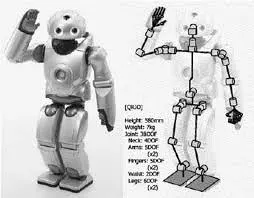QRIO - The Humanoid Robo
QRIO (Quest for Curiosity) was a humanoid robot developed by Sony. It was unveiled in 2003 and featured advanced capabilities such as face and voice recognition, the ability to walk and move smoothly, and an expressive body with gestures. QRIO was designed to interact with humans and demonstrate social intelligence.
Introduction
QRIO, short for Quest for Curiosity, was an advanced humanoid robot developed by Sony Corporation. It was introduced in 2003 and represented a significant leap in robotics technology.
Walking and Movement
One of the standout features of QRIO was its ability to walk and move smoothly. It had multiple joints and sensors that enabled it to balance itself, change direction, and navigate different terrains with relative ease.
Voice Recognition
QRIO was equipped with voice recognition capabilities, allowing it to understand and respond to verbal commands from humans. This feature enabled interactive communication and made QRIO more accessible and user-friendly.
Facial Recognition
Furthermore, QRIO had the ability to recognize faces, making it capable of distinguishing different individuals. This facial recognition capability enhanced its social interactions by enabling it to remember and respond differently to different people.
Social Intelligence
QRIO was designed to demonstrate social intelligence, which means it could interact with humans in a manner that simulated social behavior. It had expressive body movements, including waving, nodding, and gesturing, that made its interactions more engaging and human-like.
Impact and Discontinuation
QRIO's development represented a significant achievement in the field of robotics, as it showcased the potential for humanoid robots to coexist and interact harmoniously with humans in various settings. However, despite its groundbreaking technology and promising potential, QRIO's commercial success was limited. Sony eventually discontinued its production, and no new iterations or models were introduced after its initial launch.
Legacy and Influence
Nevertheless, QRIO's impact on the field of robotics was substantial. It paved the way for future advancements and inspired researchers and engineers to continue exploring the possibilities of humanoid robotics. The development of QRIO stimulated interest in social robotics, leading to further research and advancements in areas such as human-robot interaction, artificial intelligence, and machine learning.
Conclusion
While QRIO may no longer be actively available in the market, its legacy lives on, and its contributions to the field of robotics continue to influence the development of future humanoid robots and the understanding of human-robot interaction. QRIO remains a testament to Sony's dedication to pushing the boundaries of technology and creating innovative robotic companions that captivate our imagination.